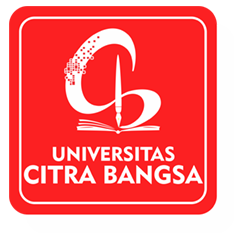PENGARUH MODEL PEMBELAJARAN COOPERATIVE TIPE NUMBERRED HEAD TOGETHER TERHADAP HASIL BELAJAR SISWA PADA MATA PELAJARAN IPA DI KELAS IV SDK STA. MARIA ASSUMPTA KOTA KUPANG
Keywords:
ata Kunci: Hasil Belajar, Numbered Head Together, Learning OutcomesAbstract
ABSTRAK Yasinta Bunga, 2020, Penelitian ini bertujuan untuk mengetahui Pengaruh Model Pembelajaran Cooperative Tipe Numbered Head Together Terhadap Hasil Belajar Siswa Kelas IV SDK Sta. Maria Assumpta. Metode yang digunakan dalam penelitian ini adalah eksperimen dengan penelitian kuantitatif. Eksperimen dilaksanakan di SDK Sta. Maria Assumpta dengan populasi 60 peserta didik. Sampel yang diteliti adalah kelas IVA sebagai kelas eksperimen sebanyak 30 siswa, kelas IVB sebagai kelas kontrol sebanyak 30 siswa. Hasil belajar peserta didik menggunakan model Pembelajaran Cooperative Tipe Numberred Head Together terbukti berpengaruh dibandingkan dengan pembelajaran yang menggunakan ceramah.
Rata-rata yang diperoleh peserta didik menggunakan model pembelajaran Cooperative Tipe Numberred Head Together mencapai 82,00 dengan nilai tertinggi 100 dan nilai terendah adalah 70, seluruh peserta didik kelas eksperimen tuntas mencapai KKM. Kelas kontrol menggunakan model pembelajaran konvensional ceramah memperoleh rata-rata 62,83 dengan nilai tertinggi 90 dan nilai terendah 35. Terdapat 7 siswa yang belum mencapai KKM. Hasil uji t-test yang diperoleh dari kelas kontrol dengan menggunakan pengujian hipotesis menunjukkan bahwa nilai sig. (2-tailed) 0,000 < 0,05 maka tolak H0 sehingga dapat disimpulkan bahwa ada pengaruh yang signifikan pada model pembelajaran Cooperative Tipe Numberred Head Together terhadap hasil belajar siswa pada mata pelajaran IPA di kelas IV SDK Sta. Maria Assumpta.
ABSTRACK Yasinta Bunga, 2020, This study aims to determine the effect of Cooperative Learning Model Type Numbered Head Together Against Student Learning Outcomes Class IV SDK Sta. Maria Assumpta. The method used in this research was an experiment with quantitative research. The experiment was carried out at SDK Sta. Maria Assump with a population of 60 students. The sample studied was class IVA as an experimental class of 30 students, class IVB as a class of control of 30 students. Student learning outcomes using the Cooperative Learning Model Type Numberred Head Together proved to be influential compared to learning using lecturers. The average obtained by students using the Cooperative learning model Numberred Head Together reaches 82.00 with the highest score of 100 and the lowest value is 70, all students of the experimental class have completely reached the KKM. The control class using the conventional lecture learning model obtained an average of 62.83 with the highest value of 90 and the lowest value of 35. There were 7 students who had not yet reached the KKM. The results of the t-test obtained from the control class using hypothesis testing showed that the value of sig. (2-tailed) 0,000 <0.05 then reject H0 so it can be concluded that there is a significant effect on the Cooperative Type Numberred Head Together learning model on student learning outcomes in science subjects in class IV SDK Sta. Maria Assumpta.
Downloads
Published
Issue
Section
License
Every works in SPASI is licensed under a Creative Commons Attribution-ShareAlike 4.0 International License.
Authors who publish with this journal agree to the following terms:
- Authors retain copyright and grant the journal right of first publication with the work simultaneously licensed under a Creative Commons Attribution License that allows others to share the work with an acknowledgment of the work's authorship and initial publication in this journal.
- Authors are able to enter into separate, additional contractual arrangements for the non-exclusive distribution of the journal's published version of the work (e.g., post it to an institutional repository or publish it in a book), with an acknowledgment of its initial publication in this journal.
- Authors are permitted and encouraged to post their work online (e.g., in institutional repositories or on their website) prior to and during the submission process, as it can lead to productive exchanges, as well as earlier and greater citation of published work (See The Effect of Open Access).




